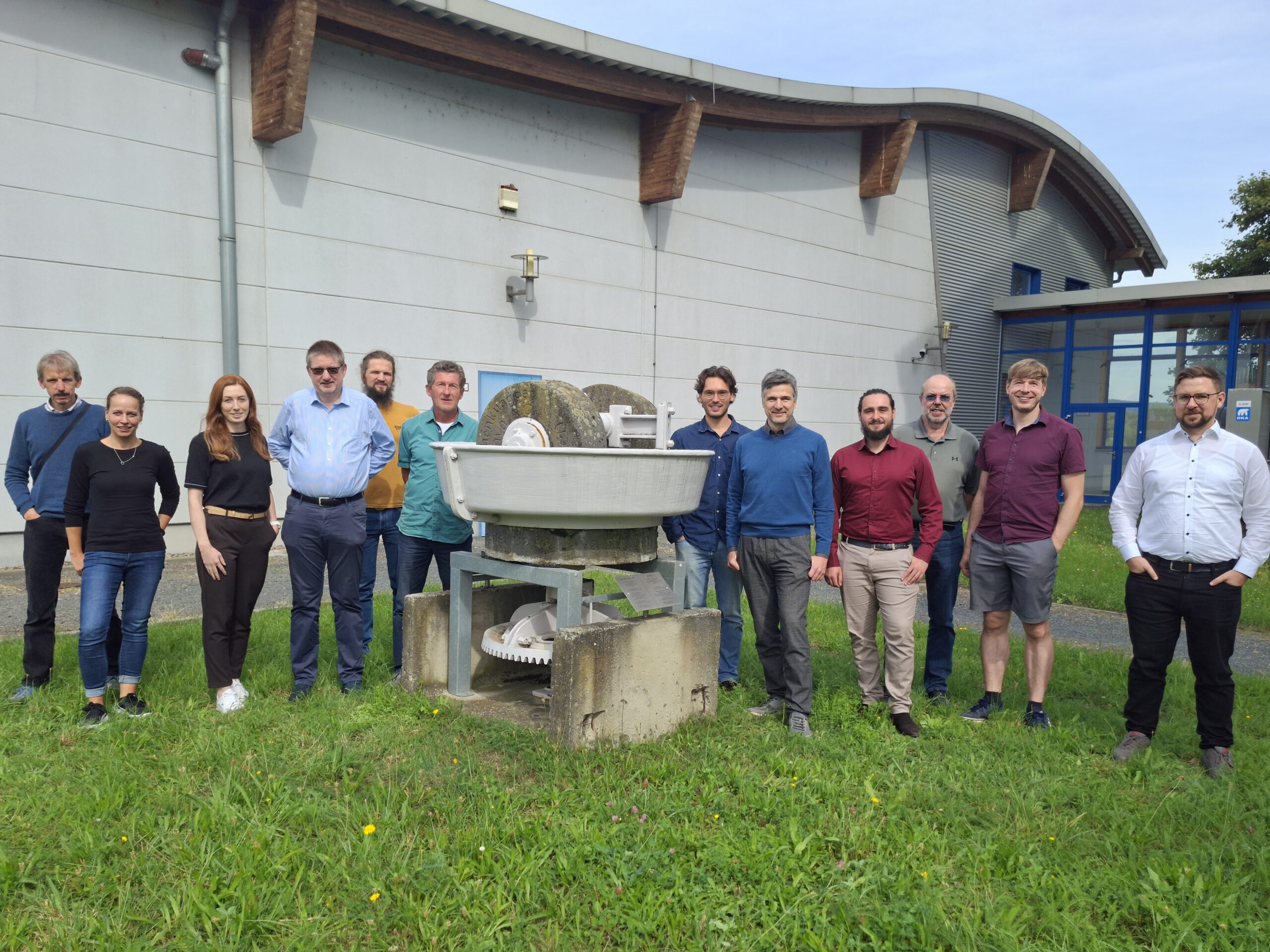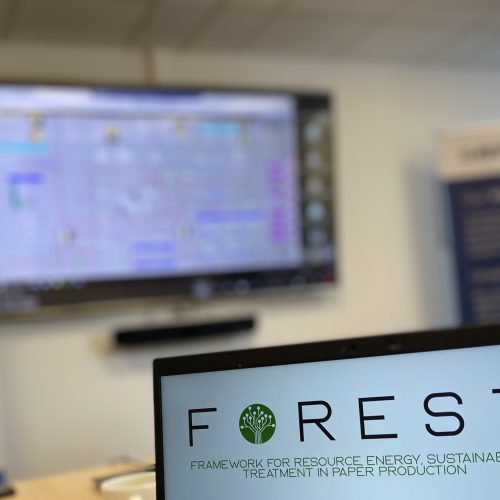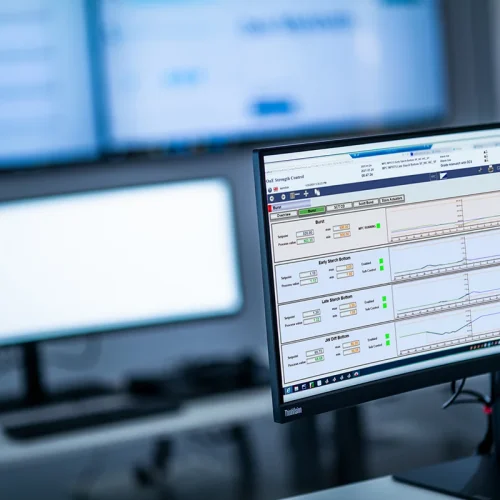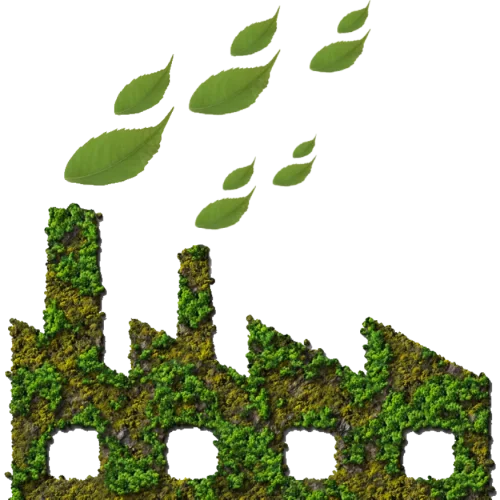FOREST: Digital twin takes shape
- News
- -
- FOREST: Digital twin takes shape

It is an impressive result: At the recent interim meeting of the project partners involved in the FOREST joint project ‘Framework fOr Resource, Energy, Sustainability Treatment in Paper’, the project sponsor Jülich (PtJ), the associated partners from Wepa, Felix Schoeller and the shareholders of Modellfabrik Papier gGmbH received a comprehensive update on the project status and a presentation of the FOREST demonstrator.
Since the project started in 2023, FOREST has been pursuing the goal of developing a framework for comprehensive digital twins of paper production. “Comprehensive means that the entire paper production process is included in the digital twin: from stock preparation to energy, steam and air systems to winding at the end of the paper machine. Even material properties and paper quality are incorporated into the model,” says Philip Kayser, MFP project manager, explaining the significance of the tool.
It is the first time that a digital image of the entire production process has been created. It makes the current status visible virtually and highlights potential for optimisation. ‘A major advantage is that new developments can be tested virtually before they are implemented in the practical application,’ says Kayser. Investments in efficiency-enhancing conversions, technologies and process engineering are associated with high costs and their effects are difficult to assess. This often slows down the measures necessary to convert plants to energy-efficient, climate-neutral production.
Data-based foundation for the transformation of the industry
FOREST makes it possible to evaluate investment -driven measures and optimisations in advance in a realistic manner, both technically and economically, before they are actually implemented. ‘We are thus creating the basis for a data-driven, sustainable transformation of the industry,’ says Kayser.
FOREST fulfils several purposes at once:
- Creating transparency: By visualising the current state, efficiency and sustainability potential can be specifically identified and evaluated.
- Accelerating innovation: New technologies, conversions or research approaches can be simulated and evaluated in advance in the digital twin, reducing development times and costs.
- Shaping the future: With the help of scenario analyses, strategies and new research approaches can be identified and developed to sustainably reduce energy requirements, costs and CO₂ emissions.
What’s the current status?
A lot has happened since the project began. The team has built up an extensive portfolio of sub-process and material models. In the background, innovative technologies such as the I4.0 administration shell (Asset Administration Shell) and the Functional Mock-up Interfaces standard (FMI), as well as FMU orchestrators, cloud connectors and dashboards, ensure technical integration and data evaluation.
Innovations were presented live at the most recent interim meeting of the project partners:
- Live CO2 monitoring: Process and energy data are read from the cloud every second and made available in Sankey diagrams for detailed analysis. This allows a detailed understanding of how much energy has been consumed per process step and asset over time, and how high the associated CO2 emissions are.
- Comprehensive process simulations: Over 30 sub-process models were completed for a tissue machine: from heat exchangers and gas burners to press sections and Yankee cylinders to material vectors with around 50 material properties. The first models were linked in an overall simulation, which already allows different operating modes of the tissue machine to be simulated and evaluated.
- Bivalent operation of hybrid drying hoods: An increasingly relevant topic in paper production is energy-flexible systems that allow energy requirements to be adapted to fluctuating energy prices. With the digital twin, different power levels of electric heating registers in a hybrid drying hood can be evaluated in advance from an economic perspective. In addition, different regulatory frameworks can be taken into account, and the digital twin can thus support the design of adapted regulations.
What’s next?
The next milestone for FOREST is the calibration and validation of the developed models, which remains a key challenge given the large number of models. Once this step is complete, numerous application possibilities will open up. For example:
- Evaluation of new press sections
- Analysis of the use of additives for fibre modification
- Integration of heat pumps and optimisation of process windows
- Continuous process optimisation in live operation
Looking ahead: from research results to industrial application
In the long term, the FOREST framework should not remain solely in research and development, but should also be applied directly in industry. ‘We want to transfer the concept to other plants and machines, thereby creating real added value in terms of efficiency, sustainability and competitiveness,’ says Kayser.
FOREST is already impressively demonstrating how digital twins can support the transformation of the paper industry. They provide the necessary impetus to overcome the uncertainties associated with investments in energy efficiency measures and pave the way for a climate-neutral future.
In the joint project FOREST – Framework fOr Resource, Energy, Sustainability Treatment in Paper, a digital, comprehensive image – a so-called digital twin – of paper production is being developed and validated in defined use cases. Energy, material and CO2 flows are modelled down to the sub-process or sub-product level, making them measurable.
Discover more news
Do you have any questions?
Feel free to contact us if you would like to find out more about Modellfabrik Papier, our tasks and our projects.
Discover more news
Learn more about us
Do you have any questions?
Feel free to contact us if you would like to find out more about Modellfabrik Papier, our tasks and our projects.


